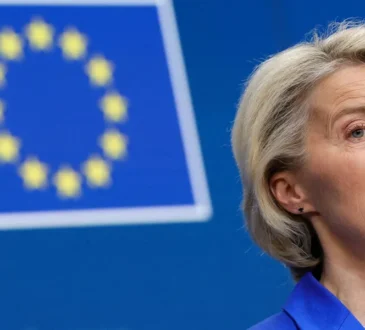
Saugata Bhattacharya, one of the three external members of the Reserve Bank of India’s Monetary Policy Committee (MPC), has cautioned that excessively low commodities prices may actually not be good for manufacturers in India, since this hurts their profits and discourages them from investment in new capacities.
Bhattacharya, who is also a Senior Fellow at the Centre for Policy Research, in an interview with The Indian Express said, “while the lower headline inflation (both CPI and WPI) certainly provides room for further policy cuts at some point in time, growth by most accounts still remains resilient.” Edited excerpts:
How do you assess India’s GDP growth in the coming months? What are the factors that are likely to influence it?
Against the backdrop of the current uncertain tariffs and trade environment, and the pending free trade agreements with the USA and EU, I will go along with RBI’s growth forecast of 6.8 per cent for FY26 (after 7.8 per cent recorded for Q1 and forecast for the next three quarters at 7.0 per cent, 6.4 per cent, and 6.2 per cent, respectively). Even the recent IMF and World Bank forecasts are similar. This is not at all bad, given the general low growth predicted for most countries in 2025 and a further deceleration in 2026.
What are the major risks to the economy over the next six months to one year?
The risks are largely from India’s merchandise and services exports. Demand from the domestic economy not directly linked to export intensive sectors still seems to be resilient, helped by the multiple stimulus measures (fiscal, monetary, regulatory, procedural, industrial, etc.) — particularly the infusions of govt policies for MSMEs. How much will be the medium-term hit from an export slowdown into domestic activity and demand, adjusted for these stimulus measures, needs to be monitored.
Do you think trade tensions with the US and China, together with FPI withdrawals, will impact India’s current account deficit?
Story continues below this ad
If tariffs on India’s exports to the US remain at the punitive 50 per cent, it will hurt certain export sectors which are also labour intensive. However, some exports like electronics, auto components, generic pharmaceuticals remain exempt from the tariffs and will help to maintain some trade flows. However, overall, lower exports to the US will have a negative impact on India’s trade deficit, although the extent of diversification to other countries remains unclear.
You mentioned that at this point a moderation in inflation rate is not a compelling reason to cut the policy rate. In your view, what are the factors that will lead to a further policy rate cut?
While the lower headline inflation (both CPI and WPI) certainly provides room for further policy cuts at some point of time, growth by most accounts remains resilient. Media reports suggest a strong lift in consumer spending during the recent festive season, particularly for automobiles and consumer durables. Credit growth is ticking up, even segments of corporate credit. Most of this is the cumulative result of the tax cuts (both direct income and GST rates) as well as the repo rate cuts and strong liquidity infusion by RBI. Rate cuts will also not help with the central risk of our exports slowing (except maybe for some lower trade finance costs). Rate cuts might actually impede some capital inflows. Both RBI and the Government of India have announced multiple measures to boost economic activity. Let’s wait and watch how these play out.
How do you expect the GST cut to play out in the economy in the coming quarters?
Story continues below this ad
As mentioned earlier, the initial demand response to the GST cuts seem to be quite positive. Let’s see (for) how long the demand and consumer expenditures sustain.
You said that the cumulative effects of fiscal and monetary stimulus measures implemented so far need monitoring. Could these measures push inflation higher in the coming months?
I don’t really see significant risk of a demand revival feeding significantly into core (the non-food and fuel) inflation at this point. Manufacturing capacity utilisation, going by RBI surveys, still allows for some increase in production to meet potential consumer demand without the economy “heating up” and increasing core inflation. One of the positive outcomes of the tariff wars is that global commodities and metals prices have remained very stable, particularly due to the threat (latent or real) of China dumping its excess capacity on non-US countries.
In fact, I’d go a little beyond this to suggest that excessively low commodities prices may actually not be good for manufacturers in India, since this hurts their profits, and discourages them from investment in new capacities, which is a major policy focus in India right now. A moderate inflation should actually be encouraged right now.
Story continues below this ad
When do you expect private capital expenditure to gain traction? What’s holding back the corporate sector from investing more? How can India achieve an above 8 per cent growth rate?
Sustained high growth will need clear signals of demand revival, plus a host of de-bottlenecking measures, which can serve to increase confidence. We think that a revival of private sector investment is likely in 2026, but this is contingent on a moderation in trade related uncertainties. We are already seeing private sector investments in tech sectors (particularly data centres), electronics and electronics manufacturing services, renewables and electric mobility, petroleum refineries, chemicals, etc. The multiple stimulus measures by the Government, coupled with the ongoing reduction in interest rates are good first steps, FTAs with large countries will open up new markets.
When do you anticipate the full transmission of the 100 bps reduction in repo rate to be completed?
The ongoing phased reductions in cash reserve ratios (CRR) that reduce the deposits banks have to statutorily keep (without any interest) with RBI will increase the funds that banks will be able to lend. We presume that this will reduce banks’ cost of funds and allow a further reduction in lending rates.





